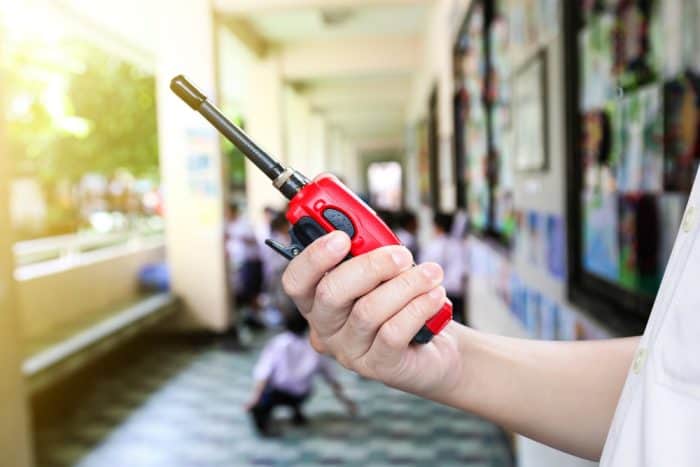
As a parent, one of the most important responsibilities you have in life is keeping your child safe. In the context of the home setting, keeping your little one safe and secure is a relatively easy task. However, ensuring the safety of a child at school can be slightly more challenging, making it essential for parents to be knowledgeable about school emergency preparedness. Schools are not only places of learning but also places where our children spend a significant amount of their time. While schools are generally safe environments, emergencies can happen unexpectedly, and being prepared is essential.
Today, we explore 7 key things that parents need to know about school security and emergency preparedness, in a bid to help you feel more confident about the wellness and safety of your child when they are at school. Read on to find out more.
- Emergency Response Plans
Every school in Australia will have an emergency response plan in place that outlines procedures and protocols for various types of emergencies, such as natural disasters, fires, lockdowns, medical emergencies, and more.
As a parent, it is important to familiarise yourself with the emergency response plan of the school your child is attending, to ensure that you are up to date with the latest information such as evacuation routes, designated meeting points, and communication protocols during emergencies.
If you have any questions, it is important to raise any queries or concerns directly with the school or early childhood service. Parents are also advised to ensure that their contact details, including mobile phone numbers, email addresses and residence details are up-to-date.
- Communication Protocols
In case of an emergency, effective communication and coordination between parents and the school are crucial. Most schools will have protocols for communicating information to parents in the event of an emergency, whether it be an extreme weather event, epidemic or school lockdown.
As mentioned in the previous point, parents should ensure that the school has up-to-date contact information, including phone numbers, email addresses, and emergency contacts, to reach them in case of an emergency. Parents should also be aware of the school’s communication channels during emergencies, such as through text messages, phone calls, or social media, to receive updates and instructions in real time.
- Reunification Procedures
During a school emergency, there may be a need for students to be evacuated or sheltered in a safe place. To ensure that you are kept in the loop as a parent, it is important to familiarise yourself with the school’s reunification procedures, which outline the process for parents to pick up their children after an emergency.
This may involve presenting identification, signing release forms, and following designated routes or locations for reunification with a child. If you are unsure of what you are supposed to do in the event of an emergency, it is imperative that you seek assistance from the school in order to equip yourself with the most up-to-date information on emergency preparedness.
This will help prevent any unnecessary panic or stress in the event of an emergency, providing peace of mind for both parents, children and school staff.
- Emergency Drills & Exercises
Schools should conduct regular emergency drills and exercises to practise response procedures and ensure that students and staff are prepared to respond appropriately during an emergency. In Australia, each FDC educator must rehearse their emergency and evacuation plan every 3 months, with everyone present at the service on the day (including any visitors).
These drills may include fire drills, extreme weather drills, lockdown drills, or other relevant scenarios. Schools are also required to keep a documented record of each rehearsal and think about what worked well, and what needs to be changed or updated.
As a parent, it is important to inquire about the frequency and types of drills conducted at your child’s school and discuss emergency preparedness with your children at home to reinforce their understanding of the importance of safety measures.
Children should be taught to take drill rehearsals seriously, as this will help to instil a sense of confidence and empowerment in students, allowing them to stay calm and make informed decisions during stressful situations.
- Mental Health Support
It comes as no surprise that emergencies can be traumatic events for both students and staff. Children who experience or witness a traumatic event at school may develop symptoms of PTSD, which can include intrusive thoughts, nightmares, flashbacks, heightened anxiety or fear, and changes in mood or behaviour.
With this in mind, parents should be aware of the school’s plans for providing mental health support during and after emergencies. This may involve counselling services, trauma-informed care, and resources for coping with stress and anxiety.
Parents should also be prepared to support their children’s emotional well-being during and after emergencies and seek professional help if needed. Be sure to encourage open communication with your child and create a safe space for them to express their thoughts, feelings, and concerns related to any school emergency.
Allow them to discuss their experiences, ask questions, and provide honest and age-appropriate information to help them understand what happened.
Learn about the impact of a school emergency or natural disaster on mental health here.
- Medical Information & Special Needs Requirements
Parents should provide relevant medical information about their child, including any allergies, medical conditions, or special needs that may require specific accommodations during emergencies.
In case of a medical emergency, such as an allergic reaction, seizure, or other health condition, informing the school about the medical information of a child can ensure that appropriate medical care is provided promptly. This information can be critical for school staff to effectively respond to a medical emergency, administer medication or treatment, and communicate with emergency responders or healthcare providers.
Additionally, children with special needs, such as physical disabilities, sensory impairments, or cognitive challenges, may require specific accommodations during emergencies.
By informing the school about these special needs requirements, parents can help ensure that the school is prepared to provide appropriate accommodations, such as evacuation plans, communication aids, or assistance with mobility, to ensure the safety and well-being of their children during emergencies. Learn about school support for children with special needs here.
- Parental Involvement
Last but not least, parents should actively engage with the school and participate in school emergency preparedness efforts. This may involve attending parent-teacher meetings, volunteering for emergency drills or training, and staying informed about the school’s emergency preparedness policies and procedures at all times.
Parents can also advocate for improvements in school emergency preparedness, such as requesting regular updates, providing feedback, and collaborating with school administrators and local authorities. By being actively involved in school emergency preparedness, parents can help ensure that their children are in a safe environment and that appropriate measures are in place to protect them in case of an emergency.
And there you have it — (nearly) everything a parent needs to know as it pertains to schools and emergency preparedness. By being informed, engaged, and prepared, parents can rest easy and contribute to their children’s school emergency preparedness efforts to help create a safer school environment for all involved.



